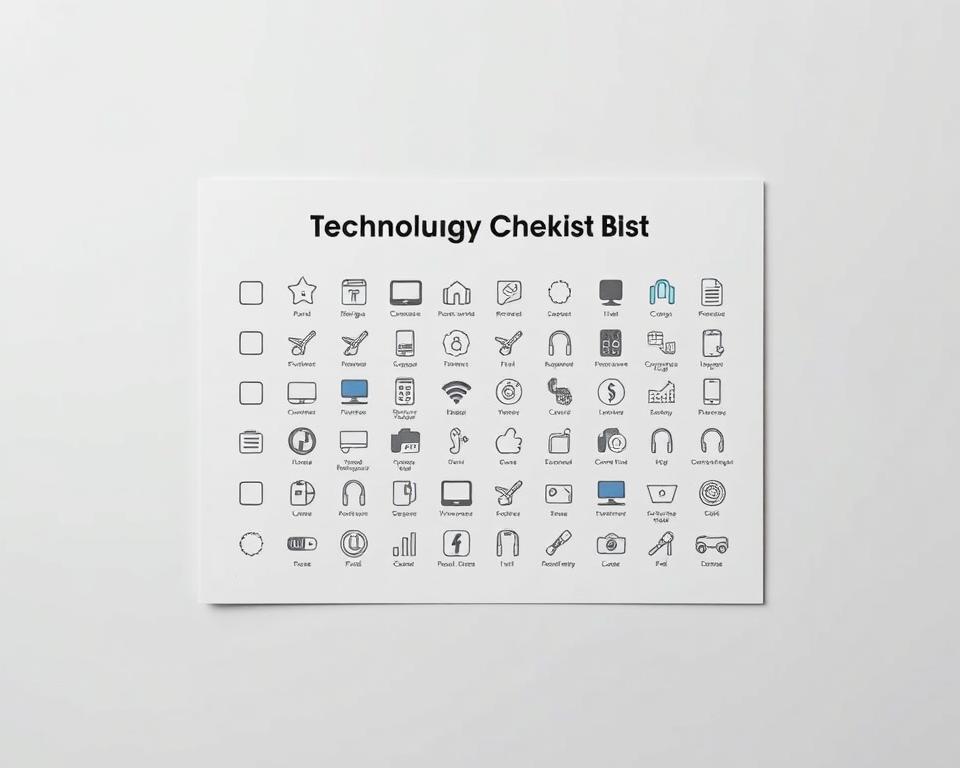Анунсиос
Have you ever wondered if machines can free your time for the creative work you love?
Ти are not alone. Right now, artificial intelligence is helping designers automate routine tasks, generate ideas, and produce content that speeds projects along.
Recent data shows business leaders expect big change: 57% say this shift will transform companies in three years, and many teams report clear gains. For example, 61% of employees feel more productive, and nearly half note faster, better decisions.
The real wins come when data-driven models and tools lift repetitive workload off your plate. That gives you back time to focus on user research, prototyping, and higher-value creative choices that only designers can make.
Throughout this guide you’ll see practical workflows, metrics, and examples—like Airbnb turning sketches into production-ready code and Netflix personalizing visuals—to help you map changes to your process with confidence.
Анунсиос
Key Takeaways
- Understand where artificial intelligence fits in your current process.
- See how data and machine learning lift routine work and boost performance.
- Learn practical steps to apply models and tools safely and responsibly.
- Find examples that spark ideas for your content and product workflows.
- Plan incremental adoption: start small, measure results, and scale.
Why AI Matters in Design Right Now
Right now, practical tools are letting teams automate boring tasks and test ideas faster. You get clear, measurable gains: Deloitte found 61% of employees report higher productivity, 49% see faster and better decisions, and 37% note improved collaboration.
From time savings to smarter decisions: automation cuts repetitive work so you and your designers can run more experiments and A/B tests. That leads to quicker user feedback, faster iteration, and higher overall performance.
How market shifts reshape creative work in the United States: more data, tighter budgets, and shorter cycles demand tools that scale research and processing without sacrificing craft. Two-thirds of leaders expect major change within five years—so planning practical solutions now pays off.
Анунсиос
- Free up time by automating summarizing, trend detection, and first drafts.
- Use machine learning to surface insights that improve product and user decisions.
- Align models and tools to your process with short milestones and clear metrics.
What to keep in mind: let models handle routine options while humans keep final judgment. That balance preserves creativity and protects quality as you scale.
What AI Means for Designers: Core Concepts Without the Jargon
Begin with simple definitions so the choice between approaches feels practical, not mysterious.
Artificial intelligence, machine learning, and deep learning — how they differ
Artificial intelligence is a broad term for systems that mimic tasks you’d expect a person to do.
Machine learning trains models on past data so they predict outcomes. Retraining keeps models useful when user behavior changes.
Deep learning uses multi-layer neural networks. It shines on vision and complex pattern tasks but needs more data and compute.
Language models and natural language processing in plain English
Language models predict words based on context. Smaller models trade scale for speed and explainability, while larger ones handle broader context.
Natural language processing turns short prompts into usable outputs for your workflow. Choose models by system limits: latency, privacy, and cost.
- Pick classic algorithms when rules and small datasets are enough.
- Use deep learning for image-heavy or pattern-rich tasks.
- Prefer small language models for efficiency and clarity when precision matters.
В крайна сметка: match models to your constraints and goals so you can communicate trade-offs clearly to stakeholders and move faster in your process.
Design Thinking Meets AI: A Human-Centered Partnership
A human-led process, enhanced by data-driven models, speeds insight without sacrificing nuance.
Use tools to scale each phase of design thinking while keeping people first. You can plug smart workflows into Empathize, Define, Ideate, Prototype, Test, and Implement so your team moves faster and stays rooted in real user needs.
How you use tools across the process
- Empathize: Run adaptive surveys and sentiment analysis to surface patterns across large sets of feedback without losing human nuance.
- Define: Use data visualization and predictive analytics to sharpen the problem statement before you commit to solutions.
- Ideate: Prompt models for many directions, then curate as a designer so ideas match real user needs.
- Prototype: Apply generative approaches to produce rapid variations and test more solutions in less time.
- Test & Implement: Automate checks and read real-time analytics so you iterate live and keep improving based on continuous feedback.
IDEO’s work—generating thousands of chair options from ergonomic data and refining them by hand—shows the way forward. You assign routine tasks to tools and keep creative judgment where it matters most.
Build rituals of learning so your designers gain fluency with models and machine learning. That preserves empathy and ensures every solution stays grounded in the people you serve.
AI design technology in Action: The Modern Workflow
You can map several creative modalities into a single, repeatable process that saves time and keeps quality.
Start with the brief: use text-to-text for drafts, translations, and outlines. Then move to text-to-image for concept art and mood frames using tools like Midjourney or DALL·E 2.
Text, image, and motion steps you can apply
- Text-to-text: generate first-draft content, microcopy, and localized variants to speed copy rounds.
- Text-to-image: make concepts and hero visuals, then refine with inpainting and canvas expansion to cut edits.
- Image-to-image: use references to keep brand continuity across a wide range of deliverables instead of starting from scratch.
- Text-to-video: draft explainers and localized clips fast, then hand off for final production.
“Document prompts and iterations so your team can reproduce results and improve over time.”
Choose the right tool and options by matching model strengths to each step. Track outputs back to user testing so content lands as intended and learning informs future work.
Key Benefits You Can Realistically Expect
You can expect concrete outcomes that show up in weekly cycles, not some distant future promise. Start by translating benefits into measurable gains so stakeholders see clear value.
Efficiency: Faster research synthesis, fewer manual tasks, and quicker iteration cycles free up time for higher-value work.
- Instruction: Copilots and in-flow guides give designers step-by-step prompts and tool tips so learning happens on the job.
- Creation: Draft assets and mockups accelerate concept work, letting you refine instead of building from scratch.
- Engagement: Interactive modules and localized variants make products more dynamic and relevant to users.
Translate these categories into metrics: track reduced task counts, faster turnaround, and improved team performance. Deloitte’s numbers—61% higher productivity, 49% faster decisions, 37% better collaboration—show the types of gains you can aim for.
“Start with one repeatable task to automate, measure impact, then scale.”
Plan for learning curves: expect early quality gaps, build human QA into the flow, and run short feedback loops so your teams learn quickly and keep your creative DNA intact.
From Data to Insight: Using NLP and Behavioral Analytics
When you map words and actions together, you reveal the moments that matter most.
Use natural language processing to turn open-ended survey replies, reviews, and social posts into themes and sentiment scores. This helps you spot shifts in feeling at scale and surface recurring user needs.
Sentiment analysis and pattern recognition for user research
Apply behavioral analytics to logs and click paths to find trends interviews miss. Retail teams can trace emotional journeys; hospitals have used movement patterns to redesign layouts.
Combine models with human review so nuanced needs survive automated processing. Pair machine learning outputs with researcher validation and you reduce false signals while keeping context.
- Turn messy text into structured insights and spot sentiment shifts.
- Detect action patterns that inform better product and service choices.
- Run adaptive surveys that change in real time to improve response depth.
- Operationalize findings in dashboards so your sprints act on clear results.
“Keep user trust central: be transparent about how you collect and analyze feedback.”
Generative AI for Ideation, Prototyping, and Content Creation
Generative tools let you spin up many creative pathways in minutes, turning a single brief into dozens of testable concepts.
Start wide, then narrow. Structure prompts to produce diverse ideas and shortlist a few options for A/B tests. Make prompts explicit about constraints—brand tone, user needs, and metrics—so outputs are on-brief.
Rapid variations, guided brainstorming, and A/B-ready options
You’ll transform early concepts into quick prototypes with models that return multiple on-brief variations. Then you iterate fast: composite, refine, and test the strongest directions.
When to treat outputs as a springboard—not the final result
Treat generated work as a starting point. Human judgment matters: refine craft, align visuals to brand, and document what you changed so authorship stays clear for designers and stakeholders.
- Build prompt libraries and references so your team gains shared learning.
- Connect generative flows to text and content creation for headlines and microcopy.
- Decide when machine learning acceleration saves time and when manual exploration yields better creative leaps.
“Use models to expand your idea set, then converge with user-driven criteria.”
Top AI-Powered Design Tools You Can Start Using Today
Pick tools that solve specific bottlenecks so you see value in weeks, not months. Focus on one task at a time—writing, imaging, testing, or video—and match products to that need.

Text and language tools
ChatGPT и Jasper speed copy, outlines, and brainstorming. You’ll use them for short-form content, microcopy, and first drafts. Plans vary: ChatGPT Plus is around $20/mo; Jasper starts near $39/mo.
Image generators and editors
Use Midjourney или DALL·E 2 for concept art and rapid variations. Their features include inpainting and canvas expansion for quick edits. Adobe Firefly and Sensei work inside Creative Cloud for generative fill and recoloring.
Design platforms and utilities
Canva Pro brings Magic Resize and quick production at ~$12.99/mo. Khroma helps color work for free, and Let’s Enhance upsizes assets from about $12/mo to keep image quality high.
UX analytics and testing
VisualEyes offers attention heatmaps and a Clarity Score so you test layouts before expensive studies. This adds useful data to research and speeds decision making.
Video, audio, and voice
Synthesia, Descript, and WellSaid Labs let you draft video and voiceovers fast. Use Synthesia for avatar-driven clips, then refine narration and edits in Descript; WellSaid offers high-quality voice avatars.
“Weigh pricing, integrations, and features to assemble a stack that fits your team and products.”
- Match tools to tasks: text generators for copy, image tools for concepts, and utilities for finishing assets.
- Evaluate options: features, pricing, and how each tool integrates with apps your team already uses.
- Standardize outputs: build templates so outputs stay consistent and on brand for designers and stakeholders.
Architecting AI for Design Work: RAG, Agents, and Systems Thinking
A practical architecture ties project documents, media, and processes into one searchable backbone. This lets you ground generative outputs in real project data and keep work predictable.
Retrieval Augmented Generation to ground your models in project data
Use RAG to connect large models to your own files. Store embeddings in vector indexes or document stores so text and image contexts return fast, relevant context.
Choose storage and processing routines for updates, governance, and retraining. Tune chunking and ranking to balance accuracy and performance.
Agent-based orchestration for complex, multi-step design tasks
Orchestrate agents to parse briefs, generate assets, run QC checks, and package deliverables. This pattern keeps each step observable and debuggable.
- Define development stages and guardrails so algorithms are auditable.
- Select components that match system and integration needs—model hosting, vector search, and workflow runners.
- Measure outcomes: response relevance, latency, and quality to prove your solutions add value.
“Document options and fallback paths so humans stay in the loop for critical decisions.”
Building on Azure: Practical Paths for Teams and Projects
A clear Azure roadmap helps you move from proofs to production without guesswork. Start by mapping project goals to services that speed development and keep results reproducible.
Assemble a core stack: use Azure OpenAI for hosted models, Azure Machine Learning for training, deployment, and pipelines, and Azure AI Foundry for secure experimentation and evaluation.
Data platforms and scalable processing
Centralize your data in Microsoft Fabric with OneLake to speed insights, governance, and collaboration across applications.
Choose Spark-based runtimes—Fabric Runtime, Azure Databricks, or HDInsight—for large-scale processing and feature engineering. Track experiments with MLflow so your development stays auditable and repeatable.
When AutoML vs. custom training fits
AutoML fits quick proofs of concept and tabular tasks. Opt for custom training when model accuracy or specialized features justify the extra training effort.
- Optimize performance and cost with right-sized models, caching, and scalable inference.
- Integrate the stack into your design workflows so assets and models are easy for teams to access.
- Define deployment patterns that keep decisions transparent and results consistent.
“Start small, measure impact, and scale the stack that matches your data and product needs.”
Responsible and Ethical Use: Guardrails for Creative Work
Responsible use starts with clear rules that guide every creative choice you make. You set expectations for transparency, privacy, and bias checks so users trust your products and experience consistent results.
Build human oversight into the process. Require review gates where designers and stakeholders validate outputs before release. That keeps the system accountable, especially in sensitive contexts.
Bias, privacy, and transparency in user-facing designs
Reduce bias by diversifying datasets and testing across segments. Run regular audits to catch skewed behavior and to improve fairness.
Protect privacy by minimizing collection, applying safeguards, and documenting retention that matches user needs. Keep NLP-driven research as a complement to direct interviews, not a replacement.
“You’ll make explicit choices about transparency—when and how you tell users AI shaped the product experience.”
- You’ll set incident response plans for erroneous outputs to keep trust high.
- You’ll ensure accessibility features are prioritized early, not patched later.
- You’ll align product governance with regulations and update models on a predictable cadence.
- You’ll train designers on responsible patterns so ethical decisions are routine.
Measuring Performance and ROI in AI-Driven Design
Измерете това, което е важно: link creative outputs to clear business signals so teams see real impact. Start with a small, honest scorecard and expand as you learn.

Quality, speed, user outcomes, and team productivity are the core axes you’ll track. Define a baseline for time-to-first-concept, revision cycles, and decision latency so you can compare before and after adoption.
Scorecard and validation
- Scorecard: balance quality, speed, and user outcomes so performance is visible and actionable.
- Baseline metrics: record iteration speed and content quality ratings; include VisualEyes or real eye-tracking as a benchmark.
- Human validation: spot-check outputs and get reviewer ratings to keep creative standards high.
Connect data pipelines so dashboards refresh automatically and deliver live insights. Then tie faster decisions and higher team productivity to dollars saved or revenue influenced to make ROI clear.
“Start with one repeatable metric, measure impact, then iterate.”
Real-World Applications and Industry Examples
Real projects show how practical workflows move concepts to production faster than ever. You’ll read clear examples that map outcomes to your process and priorities.
Airbnb turned hand-drawn sketches into code-ready components, compressing project timelines from concept to implementation.
Netflix used data to personalize artwork and localize banners at scale, which improved content relevance and engagement.
Lessons you can reuse
- Project speed: convert early wireframes into usable assets to cut iteration time.
- Predictive checks: VisualEyes’ simulated eye tracking (≈93% accuracy) helped teams test layouts before live studies.
- Creative partnerships: architects and artists pair algorithms with craft to produce award-winning work.
- Repeatable solutions: adapt these applications into workflows for your products and services.
Translate these case studies into small experiments. Pick one project, automate the repetitive steps, and keep human handoff where quality matters.
“Start with a single, measurable workflow: test it, prove value, then scale the solution.”
Заключение
Plan, then act: close the loop by running a short experiment that proves value and teaches your team. Pick one project, set clear success metrics, and keep the scope small so you can measure progress fast.
Commit to learning by refining prompts, testing models, and sharing what works. Improve training and workflows as you gather evidence so your team levels up on real tasks.
Align tools and model choices to goals, preserve user needs, and standardize how you use design tools. Document features, options, and training so adoption spreads across a wide range of projects.
Track product impact transparently, celebrate wins, and capture lessons. Embrace artificial intelligence as a collaborator that expands your ideas while you lead with taste, empathy, and judgment.
FAQ
What role does AI play in modern design workflows?
It helps you speed up repetitive work, generate creative options, and turn research into actionable insights. You can use language models and machine learning to summarize user feedback, automate routine tasks, and produce variations for visuals, copy, and layouts so your team spends more time on strategy and human-centered problem solving.
How does using AI save time and improve decisions today?
You get faster iterations, clearer guidance, and richer data-driven choices. Tools can prototype multiple variants, surface patterns from research, and suggest content or layout changes. That reduces manual handoffs, shortens review cycles, and helps teams focus on higher-value tasks like testing and refining the product.
How are market shifts in the United States reshaping creative work?
Clients expect faster delivery, personalization, and measurable outcomes. Teams adopt generative tools, behavioral analytics, and automation to stay competitive. This leads to new roles, tighter integration between product and creative teams, and a greater emphasis on measurable user outcomes and ROI.
What’s the difference between artificial intelligence, machine learning, and deep learning?
Think of them as layers: machine learning is a set of techniques that let systems learn from data; deep learning is a subset that uses neural networks for complex patterns; and the broader term covers any system that performs tasks that normally need human intelligence. Each has trade-offs in transparency, data needs, and performance for design tasks.
How do language models and natural language processing help designers?
They turn text into insights and actions. You can summarize interviews, generate copy, translate content, or build chat-based prototypes. Natural language processing helps extract sentiment and themes from user research, so you base decisions on clearer patterns instead of raw notes.
How do you apply generative tools across the design thinking phases?
Use them to scale research during Empathize, generate problem statements for Define, quickly ideate multiple concepts, prototype variations, and run simulated user scenarios in Test. For Implement, tools can help produce production-ready assets and documentation to accelerate handoff to development.
How do you keep empathy at the center while scaling research and insights?
Always validate automated insights with real users. Use behavioral analytics to find patterns, then confirm with interviews and usability tests. Preserve human interpretation in every decision and treat outputs as prompts that require contextual judgment and ethical review.
What are the common generative modes you can use in a workflow?
You’ll encounter text-to-text for copy and documentation, text-to-image and image-to-image for visual options, and text-to-video for motion concepts. Each mode fits different tasks: rapid ideation, visual exploration, or producing storyboard-ready content for testing.
What realistic benefits can your team expect from these tools?
Expect improved efficiency, clearer instruction for production, faster creative exploration, and stronger engagement metrics. Teams often see shorter time-to-first-draft, higher test throughput, and more personalized experiences for users.
How can you use NLP and behavioral analytics to turn data into insight?
Combine sentiment analysis, topic modeling, and session analytics to spot friction points and feature requests. This lets you prioritize design work based on measured user behavior rather than guesswork, improving product-market fit and user outcomes.
When should you treat generative output as a starting point rather than the final design?
Always. Use generated ideas to accelerate brainstorming and create A/B-ready options, but conduct tests, refine for accessibility and brand voice, and involve your team to make final decisions. Automated output is a springboard, not a substitute for human craft and judgment.
Which text and language tools are ready for teams today?
Tools like ChatGPT and Jasper help with copy, briefs, and content variants. They speed writing and research tasks while letting you maintain control over tone and requirements for production.
What image and editing tools should you consider?
Tools such as Midjourney, DALL·E 2, and Adobe Firefly generate visuals and assist with creative exploration. Use them to create mood boards, concept art, and rapid visual options that your team can refine.
Which platforms help with design production and utilities?
Canva and Adobe Sensei speed asset production and templating, while color and palette tools like Khroma help with visual consistency. Let’s Enhance improves image quality for delivery-ready assets.
How do UX analytics and testing tools support your process?
Platforms like VisualEyes combine eye-tracking heuristics with A/B testing to predict engagement and guide layout decisions. They help you validate choices before expensive development work.
What options exist for video, audio, and voice content?
Tools such as Synthesia, Descript, and WellSaid Labs let you produce demo videos, narrated prototypes, and voice interfaces quickly. They speed content creation for marketing, onboarding, and in-product experiences.
What is Retrieval Augmented Generation and when should you use it?
RAG grounds model outputs in your project data by combining retrieval and generation. Use it when accuracy and traceability matter—like documentation, personas, or design systems—so outputs link back to real sources.
How can agent-based orchestration help with complex design tasks?
Agents automate multi-step workflows, like gathering research, generating concepts, and preparing test scenarios. They reduce manual coordination for repeatable tasks and help scale cross-team work while preserving checkpoints for human review.
What Microsoft stack options support teams building these capabilities?
Azure OpenAI and Azure Machine Learning provide model access and training; AI Foundry supports integrated workflows. Microsoft Fabric and OneLake help centralize data so you can accelerate insights and production pipelines.
When do AutoML and Spark-based platforms make sense for your projects?
Use AutoML when you need quick model prototypes without heavy engineering. Spark-based platforms fit large-scale data processing and feature engineering for advanced behavioral analytics and personalization efforts.
How do you manage bias, privacy, and transparency in user-facing work?
Build guardrails: document data sources, run bias and fairness checks, get informed consent for user data, and explain how models influence outcomes. Keep human review in the loop and create clear audit trails for decisions.
What metrics should you track to measure performance and ROI?
Track quality (task success and error rates), speed (time-to-delivery and iteration cycles), user outcomes (engagement and retention), and team productivity (throughput and satisfaction). Tie improvements to business KPIs to justify investment.
Can you share real-world examples of practical applications?
Teams use these tools to generate code-ready wireframes, produce localized visuals at scale, personalize marketing creatives, and automate usability analysis. These applications lower cost per experiment and let you test more ideas with real users.



